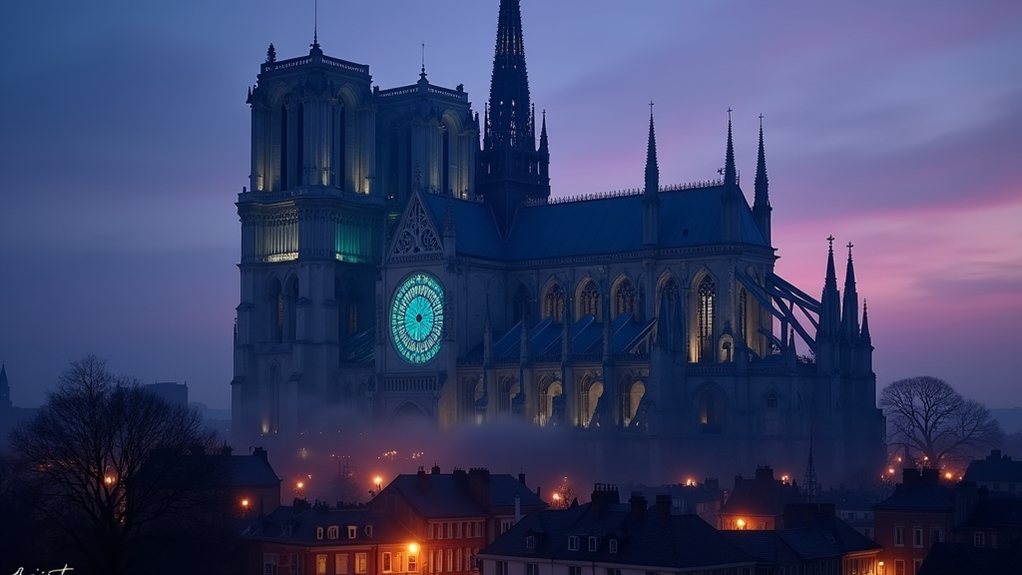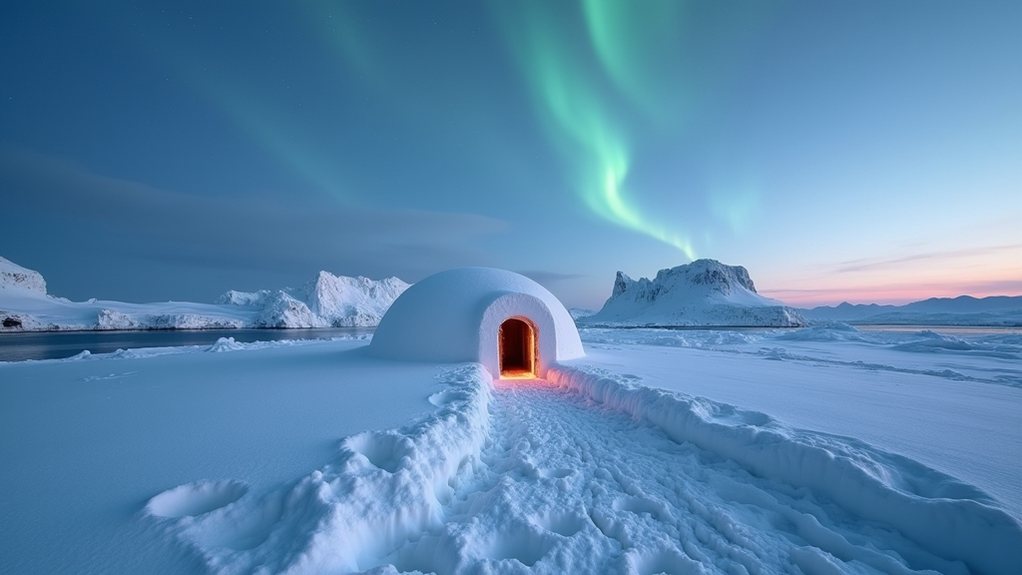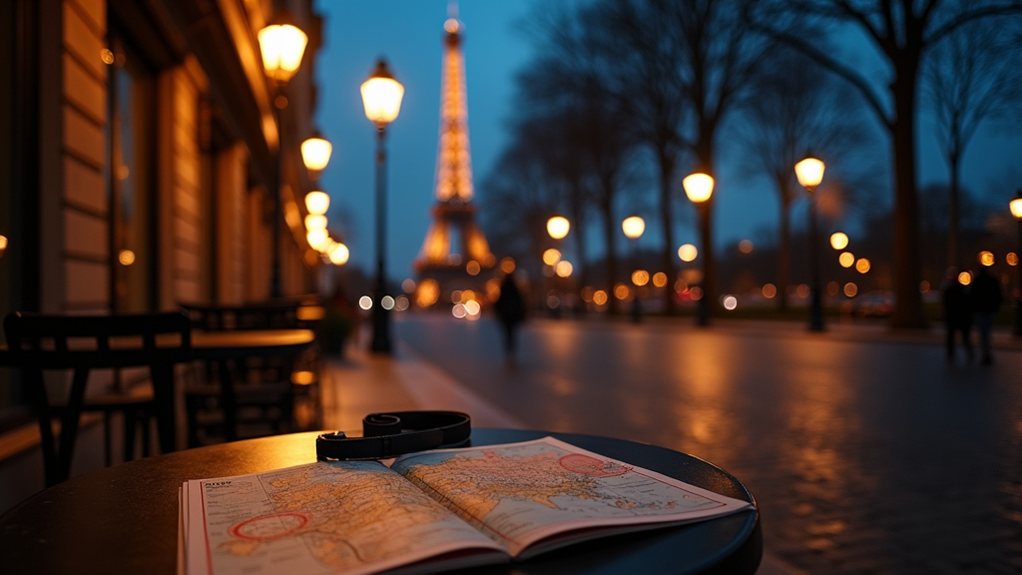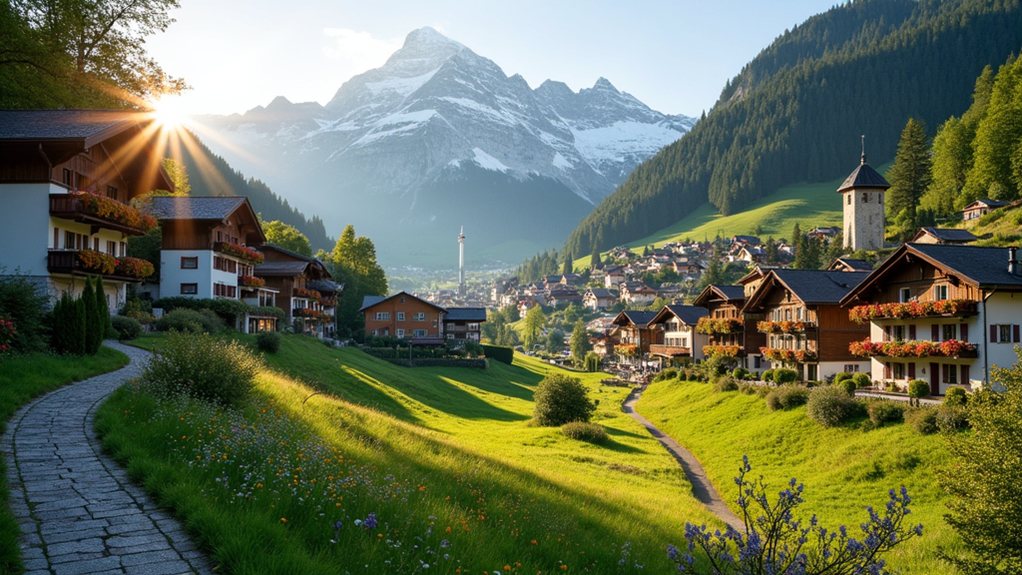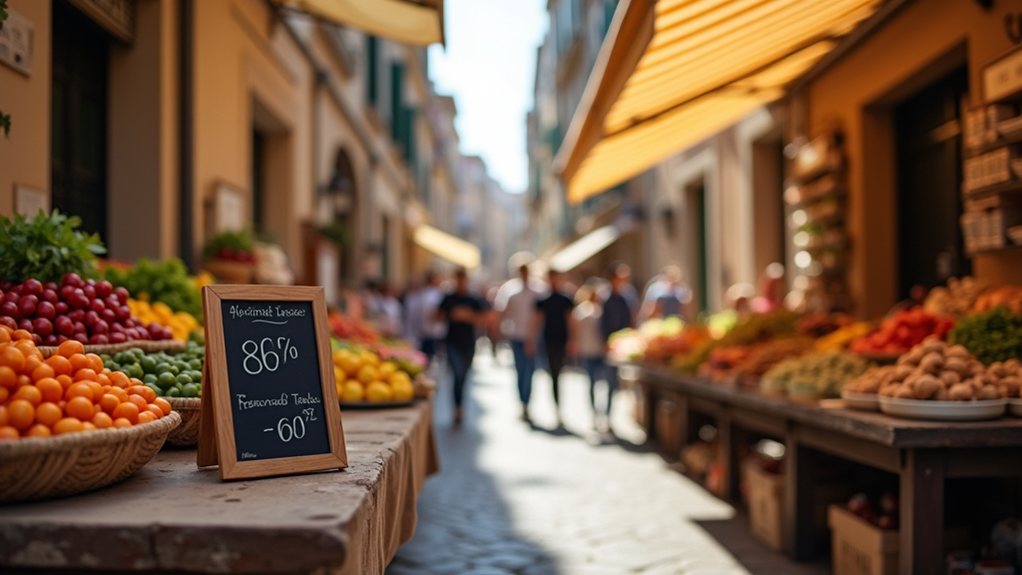Cradled like a forgotten jewel in France’s crown, Chartres quietly beckons travelers just an hour from Paris’s bustling boulevards. While most visitors make a beeline for its magnificent Gothic cathedral, with 176-foot towers and world-renowned stained glass, the surrounding medieval town offers its own architectural symphony. Rick Steves calls it “architecture’s greatest secret,” and he’s right—the labyrinth of winding streets, half-timbered houses, and stone bridges transports visitors to an authentic France that many never uncover.
A Gothic Marvel Hidden an Hour From Paris
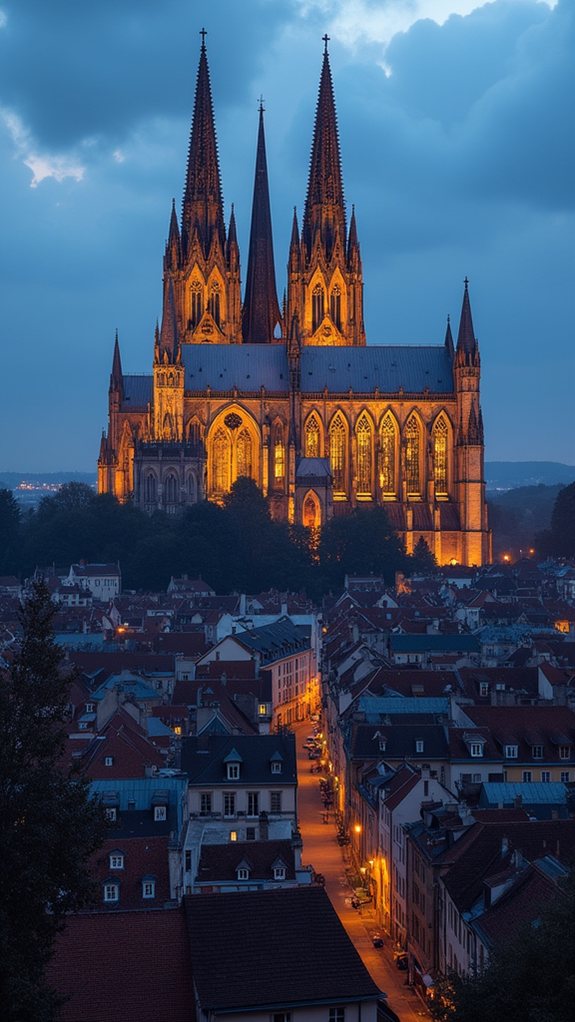
When travelers commence on an hour southwest of Paris by train, what awaits them isn’t just another quaint French town, but one of humanity’s greatest architectural achievements hidden in plain sight. Chartres Cathedral, rising majestically above the medieval town’s skyline, stands as Europe’s most renowned Gothic church, completed in just 70 years after a devastating fire in 1194.
The cathedral’s rapid construction created an architectural unity that perfectly captures the 13th-century “Age of Faith,” with its foundation built atop earlier Gallo-Roman settlements. What makes Chartres truly extraordinary is its massive collection of stained glass windows, covering nearly 28,000 square feet—the largest surviving medieval glasswork in the world. The famous “Chartres Blue” in these windows creates a difficult-to-replicate color that has fascinated artists and historians for centuries.
These colorful panes, arranged like an ancient comic strip to be read from bottom to top, served as a visual encyclopedia for the illiterate masses, telling the Christian story from Genesis to Revelation. The cathedral is dedicated to Notre Dame, serving as a shrine to the Virgin Mary with stunning depictions of her ascension to heaven.
Gothic engineering innovations, including pointed arches, flying buttresses, and strategic columns, allowed for these enormous windows while supporting the cathedral’s impressive structure. The nave stretches over 400 feet, making it the widest in France, while the exterior sculptures and portals complement the glasswork to create what scholars call “The Book of Chartres,” with architecture as its binding.
For centuries, pilgrims have traveled to this sacred site, and today’s visitors continue the tradition, marveling at the famous labyrinth replicated in meditation centers worldwide. Despite multiple fires throughout history, the cathedral has preserved its original 13th-century elements with remarkable integrity. Rick Steves recommends experiencing the cathedral through cultural immersion rather than rushing through it like a typical tourist attraction. As Rick Steves often notes, the peaceful ambiance of Chartres provides a welcome respite from the busy streets of Paris.
The town of Chartres itself, often overshadowed by its magnificent centerpiece, offers charming medieval streets and houses worth exploring. During evening hours, “Chartres en Lumieres” bathes the cathedral and surrounding buildings in colorful light projections, adding a contemporary dimension to this ancient architectural treasure.
While Paris gets the crowds, Chartres offers the discerning traveler something perhaps more valuable—an authentic glimpse into the soul of medieval France.

